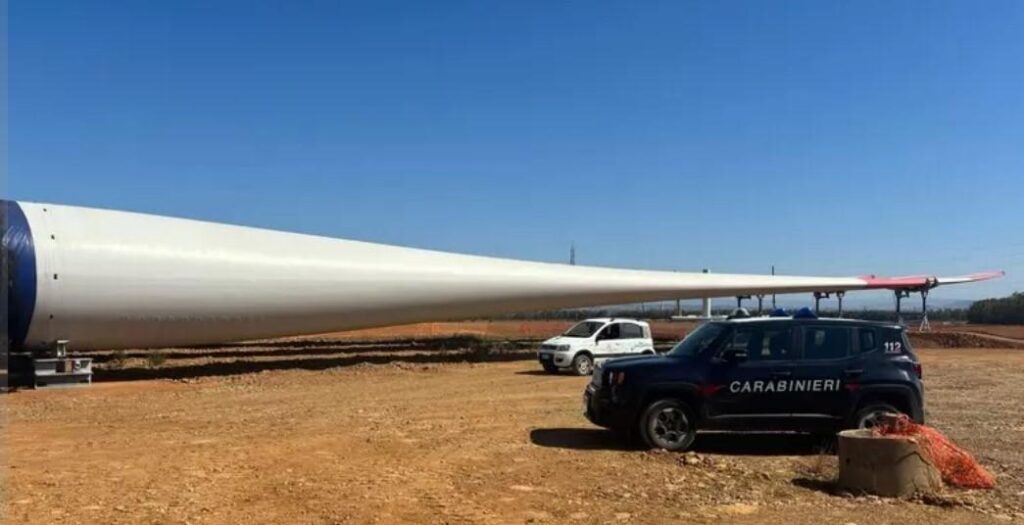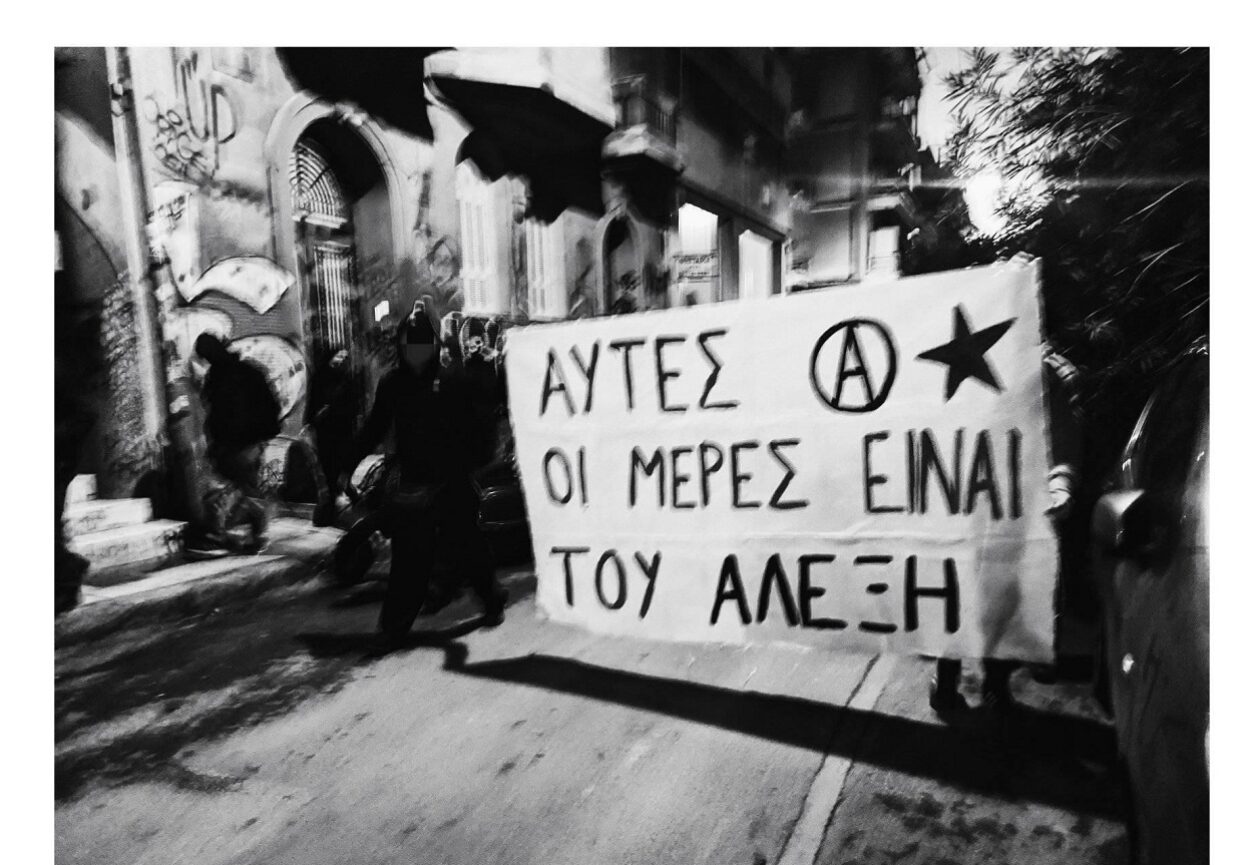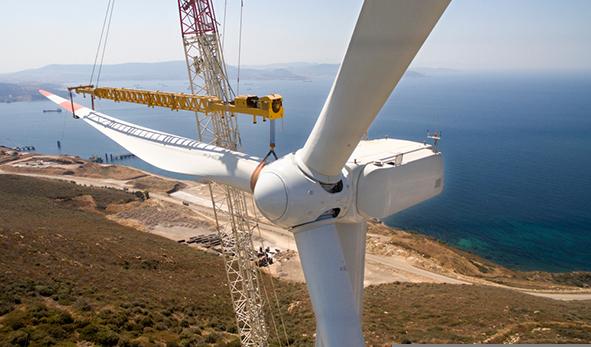In Sardinia, as in many other parts of Europe, energy projects to feed green capitalism have been proliferating for several years. In these sunny and seaside regions, already infested by mass tourism, these are mainly solar and wind farms.
On this Mediterranean island off the coast of Corsica, monsters of steel and cement must be built at all costs, even if it means uprooting olive, apricot and almond trees by force, to be replaced by huge industrial wind turbines with masts up to 200 meters high. Nearly 800 new “renewable energy production” projects are officially being studied, some of which are symbolic of all the others, such as that of the Chinese multinational Chint, which in April 2024 purchased over a thousand hectares in the north of the island (at Nurra), in order to build the largest solar farm ever conceived in Europe. Faced with growing citizen protests, ranging from local committee demonstrations to picketing the port of Oristano in an attempt to block the arrival of a shipment of wind masts, and arguing in particular for the landscape and the fact that Sardinia cannot continue to be ravaged in this way just to export so-called “green” energy to the mainland, the region’s president soon found herself faced with a dilemma.
On the one hand, there’s the internal mess of these heterogeneous mobilizations, where some say “no” to wind turbines but “yes” to LNG terminal infrastructures, while others, like the institutional environmental associations (Legambiente, Greenpeace, WWF), ended up noisily withdrawing from the protests, explaining that wind turbines are basically quite clean, and that the priority is above all to demand a moratorium on fossil fuels (from which 75% of Sardinia’s electricity comes, with 40% exported to the Italian peninsula). And on the other hand, of course, there’s the whole range of political and economic interests at stake, including in terms of the “energy transition” financed by the European Union, even if wind turbines and solar farms really only serve to smooth fossil fuel consumption curves on the industrial energy market.

As a result, on July 3, the center-left-led region pulled out all the stops: the adoption of a regional law – against which Meloni’s government immediately launched an appeal – prohibiting the installation of all wind and solar farms for eighteen months (i.e., a moratorium), but only on works (not licenses or authorizations), only if they destroy new land, and only from that date onwards… which still leaves the way clear for 37 promises of techno-industrial devastation already scheduled (i.e. 4 wind farm projects authorized between 2015 and 2022, and 33 solar farm projects authorized between 2019 and 2023).
Except that, in Sardinia as elsewhere, it’s not surprising that some end up moving on to actions that are a little less pacified and restricted to the daytime, without the “ifs” and “buts” of institutions or citizens’ committees, by directly striking at the giants who are ransacking the territory not only in plain view, but also out of sight by extracting minerals from the four corners of the world (copper from Peru and Chile, iron ore from Brazil, silver from Mexico and Argentina, bauxite from Guinea, rare earths from China)…

For the authorities, the first warning came on Monday August 26 from the Nuoro area, along the road between Mamoida and Gavoi, when an employee maintaining 50-meter wind turbines already in operation noticed that the bolts of a support mast had been unscrewed and removed, putting the entire structure at risk of falling in strong gusts. This was the last straw for the police who rushed to the scene, as the saboteurs intended to turn the machine’s strength into weakness, counting on the force of the wind that the machine shamelessly exploits, to knock it to the ground after weakening its base.

As for the second alert, it arrived a few days later, or rather a few nights, from Thursday to Friday August 30, in the Villacidro countryside. There, on the site of the Danish multinational Vestas, where three huge blades were still waiting to be erected, unidentified people began to show their warm hostility by spraying them with accelerant, before lighting them all on fire. According to the local press, “in a short space of time, a fire broke out, completely destroying the plastic sheeting covering the blades and damaging them. The amount of damage is not yet known.”
The history of Sardinia’s devastation at the hands of industrial capitalism goes back a long way, from the massive clearing of its primary forests in the 19th century to manufacture railroad sleepers for the mainland, to its coal mines, to becoming NATO’s military dustbin in the 1950s (its missile testing center is located at Salto di Quirra). Today, the frenetic multiplication of wind turbines on an island that already boasts an oil refinery and a coal-fired power station, demonstrates once again the fraud of an “energy transition” that claims to substitute energy sources when in fact they are cumulative, and of a green capitalism that only extends the ecocidal ravages, particularly in the sacrificed, poor and peripheral territories of Southern Europe.
But there’s also a small detail in this story, which will certainly have escaped no one’s notice: while wind turbines are certainly giants, they are like other large modern infrastructures, in other words, with feet of clay scattered all over the territory. You can try to knock their heads off by dismantling the base, or directly burning their wings, depending on your taste…
[Local press summary, September 1-3, 2024]
via: sansnom Translated by Act for freedom now!

